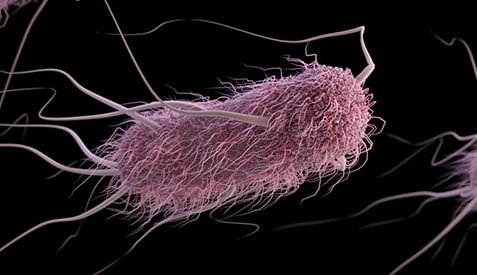
A specific food has not yet been confirmed as the source of this outbreak, but many sick people reported eating sandwiches with romaine lettuce at Wendy’s restaurants in Michigan, Ohio and Pennsylvania before getting sick. Based on this information, Wendy’s is taking the precautionary measure of removing the romaine lettuce being used in sandwiches from restaurants in that region. Wendy’s uses a different type of romaine lettuce for salads. Investigators are working to confirm whether romaine lettuce is the source of this outbreak, and whether romaine lettuce used in Wendy’s sandwiches was served or sold at other businesses. Wendy’s is fully cooperating with the investigation.
CDC is not advising that people avoid eating at Wendy’s restaurants or that people stop eating romaine lettuce.
- Wendy’s is taking the precautionary measure of removing the romaine lettuce being used in sandwiches from restaurants in this region.
- At this time, there is no evidence to indicate that romaine lettuce sold in grocery stores, served in other restaurants, or in people’s homes is linked to this outbreak.
- CDC will update this advice if the investigation identifies foods to avoid.
Call your healthcare provider right away if you have any of these severe E. coli symptoms:
- Diarrhea and a fever higher than 102°F
- Diarrhea for more than 3 days that is not improving
- Bloody diarrhea
- So much vomiting that you cannot keep liquids down
- Signs of dehydration, such as:
- Not peeing much
- Dry mouth and throat
- Feeling dizzy when standing up
If you have symptoms of E. coli infection, help public health officials solve this outbreak:
- Write down what you ate in the week before you got sick.
- Report your illness to your local or state health department.
- Answer public health officials’ questions about your illness.
- Currently, CDC is not advising businesses to stop selling or serving any foods.
- Most people infected with Shiga toxin-producing E. coli experience severe stomach cramps, diarrhea (often bloody), and vomiting.
- Symptoms usually start 3 to 4 days after swallowing the bacteria.
- Most people recover without treatment within 5 to 7 days.
- Some people may develop a type of kidney failure (hemolytic uremic syndrome, also called HUS) and need to be hospitalized.
- For more information about E. coli, see the E. coli Questions and Answers page.
Credit : https://www.cdc.gov/ecoli/2022/o157h7-08-22/index.html

